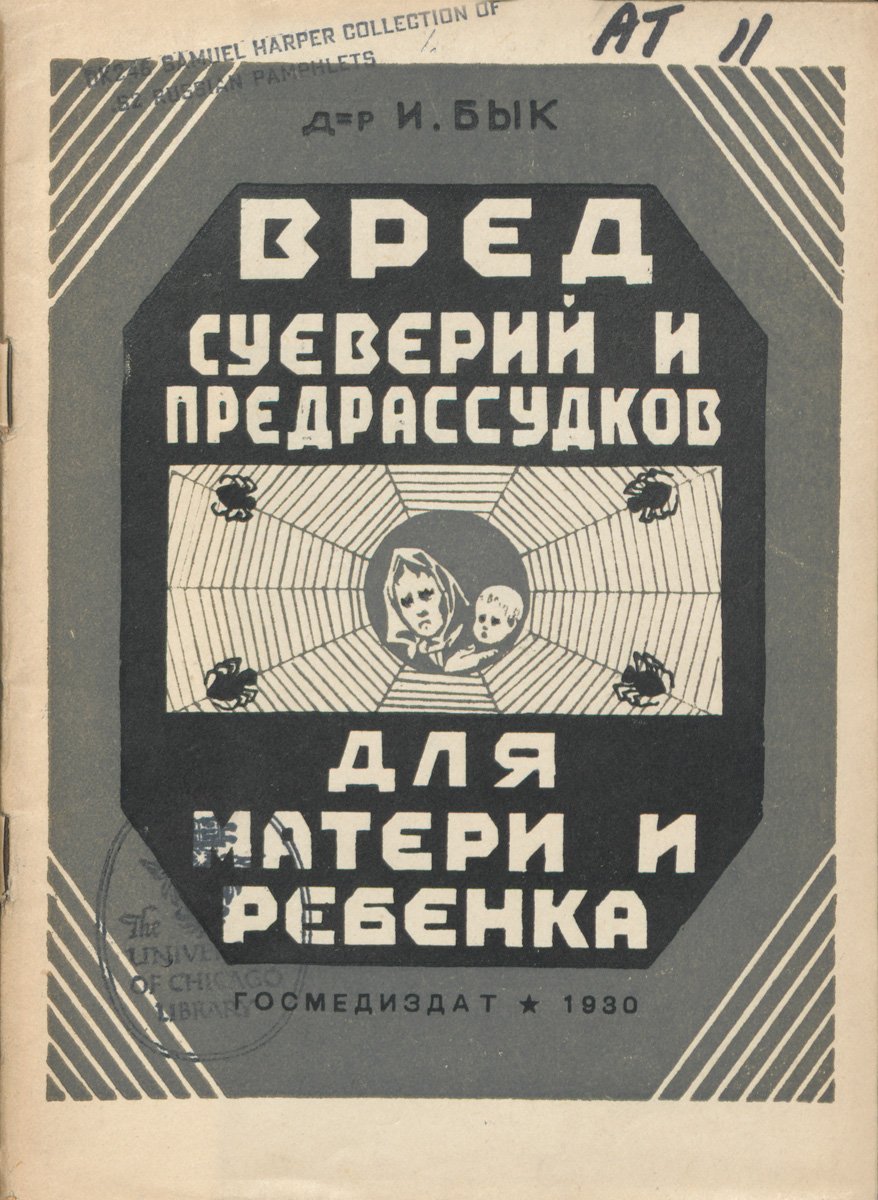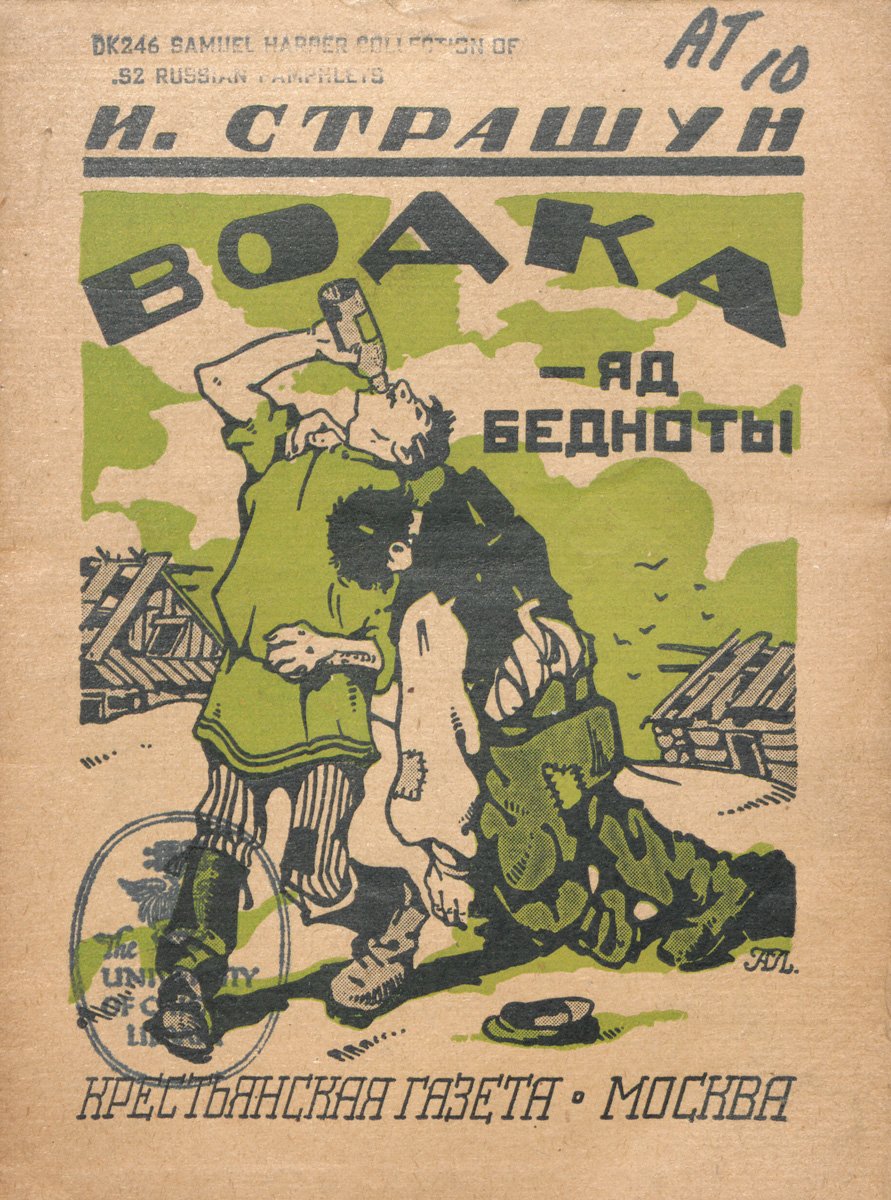Hygiene
Harper continued to collect pamphlets in the years following the revolution, often in new categories, such as social hygiene. The Soviets took up the battle against drinking with propaganda, rather than prohibition (with which the United States experimented from 1920-1933). In his introduction to Il’ia Strashun’s Vodka—the Poison of the Poor, Health Commissar Nikolai Semashko argues that drunkenness is the most sinister enemy of workers, undermining their health, but also their economic and cultural development. It should be fought in the same manner that had led to the vanquishing of the capitalists and landowners. Strashun directs much of his attack against home brewing in the villages, where, one of his sources reports, social institutions are not yet strong enough to carry out a winning campaign on this front. Doctor Byk’s tract addresses superstitions regarding natal and prenatal care. Some of these might be relatively harmless (if an expectant mother drinks water from a bucket her child will suffer from heartburn; if she looks an animal in the eye her child will have animal eyes; if she looks to the side while sifting flour her child will be cross-eyed; birthmarks are ascribed to the mother’s grabbing herself in fright or crossing the street during a funeral), while others could have real implications in the healthy carrying of the child (feeling prenatal movement meant that the child’s soul had found its place and a miscarriage could no longer take place). These, he argues, are a legacy of the pre-Revolutionary period, and can be stamped out through education.


